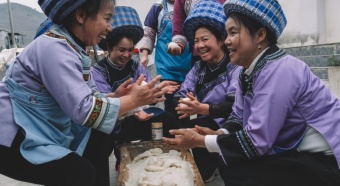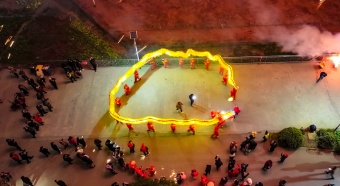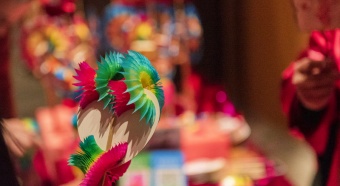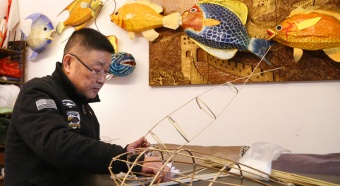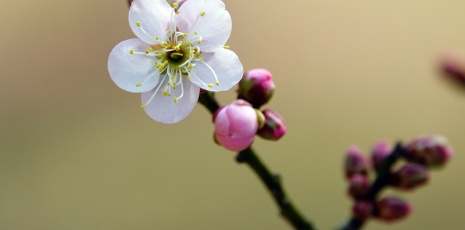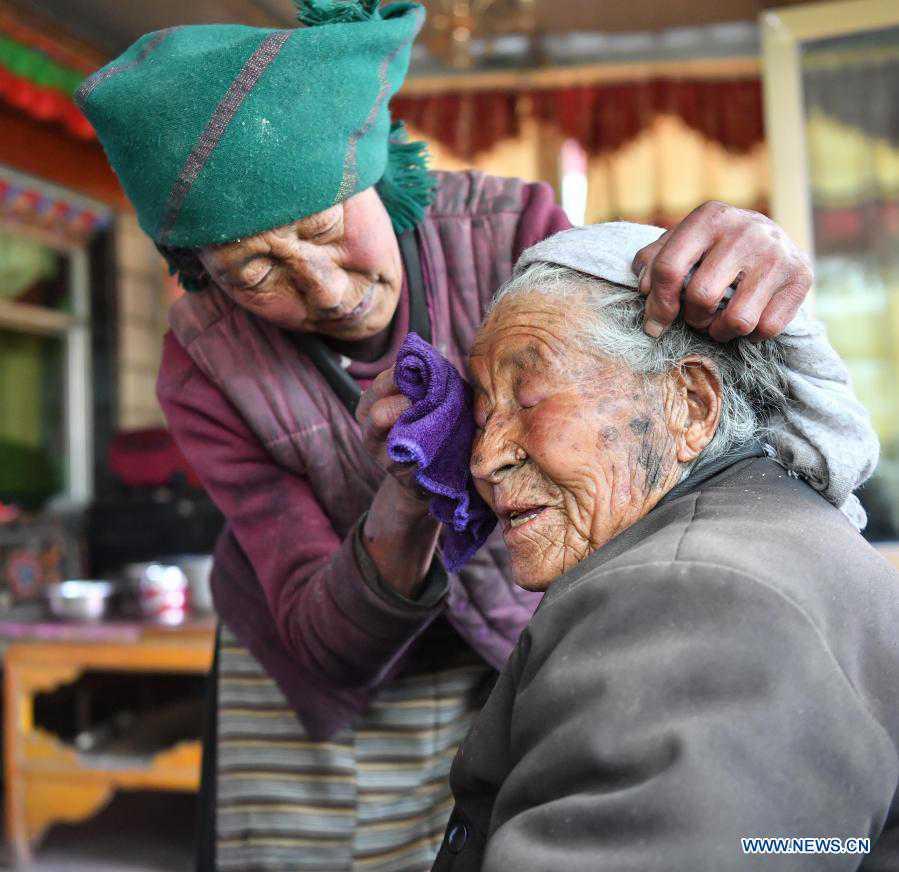
Drolkar's daughter helps her clean face in Qugaqiang Village of Lhunzhub County, Lhasa, southwest China's Tibet Autonomous Region, March 22, 2021. Drolkar, born in 1927, is a villager in Qugaqiang Village of Lhunzhub County, Lhasa. In old Tibet, Drolkar had to go to Lhasa to carry stones for building. "Every time, the serf owner would stamp my forehead and arms as proof. Sometimes my forehead and arms were full of seals after work," Drolkar said. "We were told to sing while working at the construction site. When we were too hungry to sing, the serf owner would beat us with sticks," she said. Such a plight came to an end in 1959, after a democratic reform liberated more than 1 million people, or 90 percent of the population of the region at that time, from the feudal serfdom. Drolkar's family since then was granted farmland to grow crops and began to feed livestock, living a warm life with their own hands. Nowadays, local government provides health subsidies to the elderly in Lhasa. Drolkar can receive an annual subsidy of 2,400 yuan (about 368 U.S. dollars). (Xinhua/Jigme Dorje)

